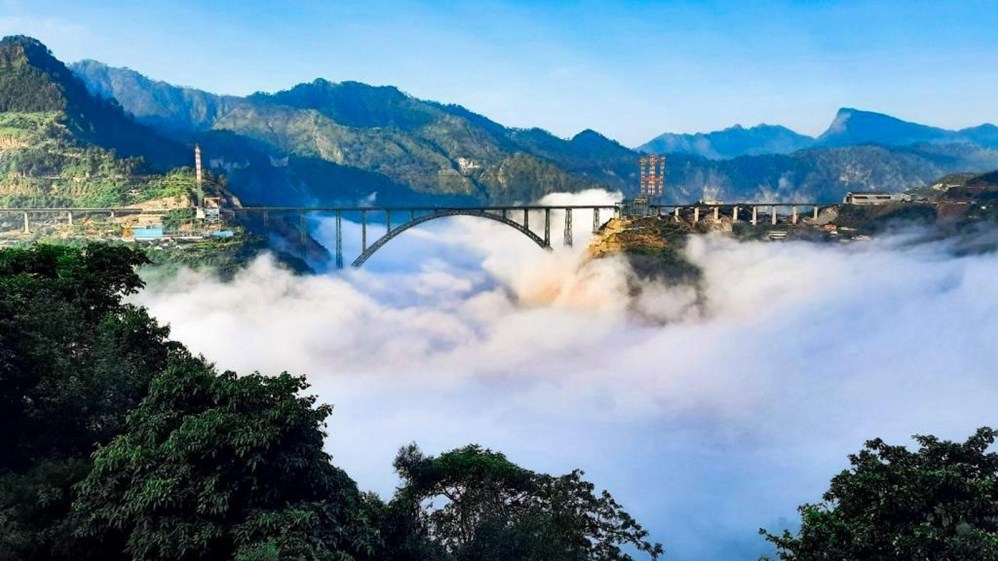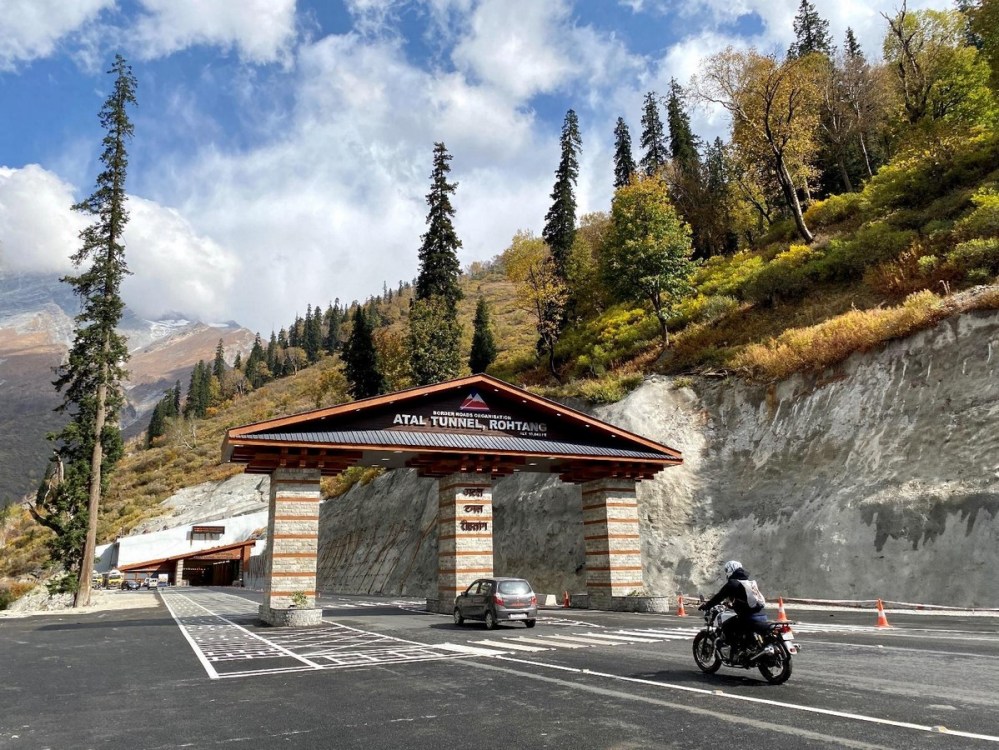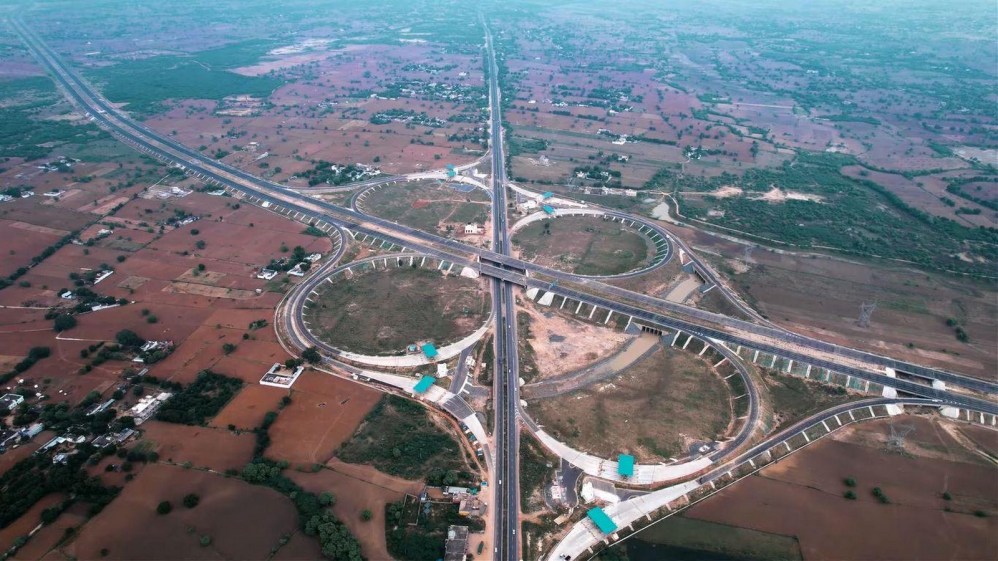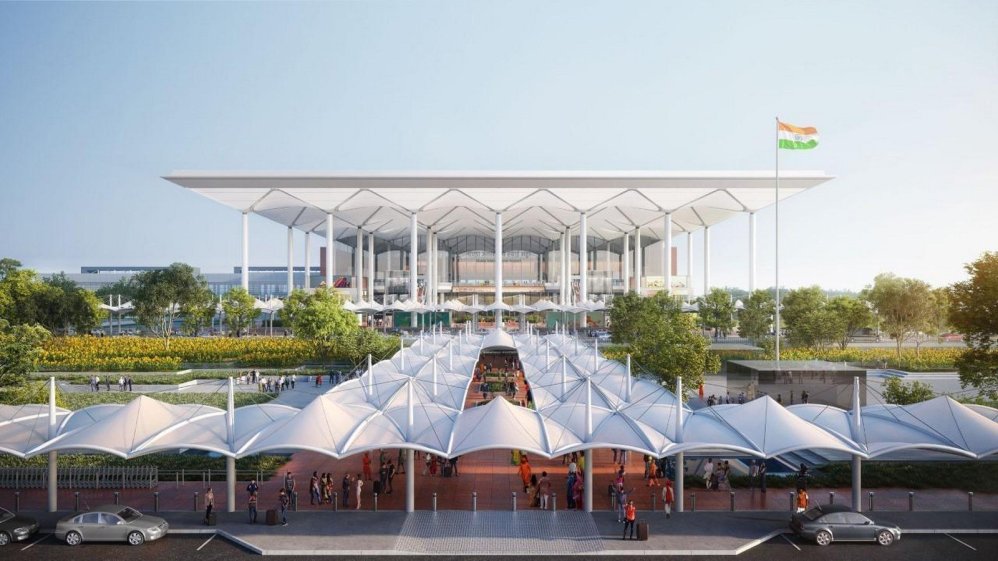India’s rapid economic growth has positioned it as one of the world’s fastest-growing economies, and the country’s infrastructure sector has played a pivotal role in this advancement. Recognizing the significance of infrastructure development as a catalyst for economic progress, the Indian government has taken proactive measures to attract investments and expedite development in this sector. As a result, a wave of ambitious government-backed infrastructure projects has emerged, aimed at modernizing the country’s infrastructure and enhancing the well-being of its citizens. The infrastructure sector comprises power, bridges, dams, National Highways, Railways & other urban infrastructure projects. The infrastructure sector acts as a catalyst for India’s economic growth, stimulating the expansion of related industries.

Infrastructure development has been accorded top priority by the government, as it plays a crucial role in the ambitious target of achieving a $5 trillion economy by 2025. To realize this economic vision, the country aims to invest $4.5 trillion in infrastructure development by 2030, as stated by the Department of Economic Affairs, Government of India. These investments are expected to fuel growth, create employment opportunities, and propel India’s economic trajectory toward its ambitious goal.
The economy’s infrastructure plays a vital role in propelling its progress and shaping its future development prospects. India envisions achieving a $40 trillion economy by 2047 and transitioning from a developing economy to a developed one, necessitating significant infrastructure development. In light of the COVID-19 pandemic and digital transformation, the focus now extends beyond physical infrastructure to encompass digital and social infrastructure.

India is embarking on ambitious infrastructure projects, exemplified by the Chenab Bridge in Jammu and Kashmir. This remarkable arch railway bridge stands at a high altitude, showcasing the talent of Indian engineers and their capacity to create innovative and sustainable infrastructure for the country’s growth.
The Indian government’s budget for 2023-24 emphasizes increased spending on the infrastructure sector, with nearly three times the allocation compared to 2019-20, amounting to 3.3% of GDP. The budget allocates INR 75,000 crores for 100 critical projects aimed at enhancing multimodal logistics infrastructure.
Notably, the railway sector, a crucial component of India’s infrastructure development, receives significant attention with an allocation of INR 2.4 lakh crores. This funding will support the development of new semi-high-speed Vande Bharat trains, track upgrades, and maintenance, facilitating high-speed travel.
The Ministry of Railways is also working on dedicated freight corridors, such as the Eastern Dedicated Freight Corridor (EDFC) and Western Dedicated Freight Corridor (WDFC), which have already commissioned over 1724 km of tracks, fostering efficient freight transportation and improving the railways’ on-time performance.
Transport infrastructure receives priority in government spending, evident in the 36% increase in the Ministry of Transport and Highways’ allocation. The development of new expressways, like the Delhi-Mumbai expressway, Bengaluru-Mysuru expressway, and Agra-Lucknow expressway, under the Road Connectivity scheme, has connected cities with reduced travel times, enhancing interconnectivity across the country.
These are the top 5 Mega Projects across the country benefitting different sectors-
Atal Tunnel
The Atal Tunnel also referred to as the Rohtang Tunnel, stands as a remarkable infrastructure undertaking located in Himachal Pradesh, India. Enabling all-weather connectivity between Manali and Lahaul-Spiti, this project effectively overcomes the six-month isolation caused by heavy snowfall at the Rohtang Pass. With a focus on sustainability, the Atal Tunnel positively impacts the environment, easing traffic congestion and preserving the fragile ecosystem of the Rohtang Pass. Spanning 9.02 km, it holds the distinction of being the world’s highest highway single-tube tunnel above 10,000 feet (3,048 m).
Chenab Bridge
The Chenab Bridge serves as a remarkable engineering marvel within the Indian Union territory of Jammu and Kashmir. As a part of the Udhampur-Srinagar-Baramulla Rail Link (USBRL) project, it ranks among the world’s highest rail bridges. Soaring 359 m (1,178 ft) above the Chenab River, its construction necessitated cutting-edge engineering techniques to withstand the region’s rugged terrain and challenging weather conditions. The bridge not only reduces travel time but also fosters economic growth by facilitating the seamless movement of goods and passengers. Symbolizing India’s technological prowess, the completion of the Chenab Bridge contributes significantly to the nation’s overall development and integration.

Delhi-Mumbai Expressway & Industrial Corridor
The Delhi–Mumbai Expressway is an ambitious under-construction project that will span 1,350 km, featuring 8 lanes (expandable to 12 lanes) of an access-controlled expressway. This expressway will link India’s capital, New Delhi, with its financial hub, Mumbai. The estimated project cost, including land acquisition, is around ₹1,00,000 crores. Initially, the expressway will be 8 lanes wide, significantly reducing the current travel time of 24 hours to just 12 hours. The route is designed with a greenfield alignment in backward areas, and provisions have been made to reserve land for an additional four lanes in the future, as well as space for utilities, plantation, and public transport on both sides. The Delhi–Mumbai Expressway, along with the Western Dedicated Freight Corridor, is set to become a crucial backbone of the Delhi-Mumbai Industrial Corridor, promoting economic growth and industrialization along the freight corridor.
The Delhi-Mumbai Industrial Corridor (DMIC) aims to establish sustainable and high-quality industrial infrastructure along the busy Delhi-Mumbai freight corridor. The initiative involves the development of logistics hubs, industrial zones, ports, airports, highways, power plants, schools, and hospitals to encourage economic growth and industrialization along the corridor. Once completed, the DMIC project will create a fast and reliable trade route connecting northern India to the southern part, reducing cargo transfer time from 14 days to just 14 hours.

Mumbai Trans Harbour Link
The Mumbai Trans Harbour Link, also known as the Sewri–Nhava Sheva Trans Harbour Link, is another significant under-construction project. It consists of a 21.8 km 6-lane access-controlled expressway grade road bridge that will connect Mumbai with its satellite city, Navi Mumbai. This bridge is estimated to cost ₹17,843 crore and will become India’s longest sea bridge upon completion. The Mumbai Trans Harbour Link is expected to significantly reduce travel time between Mumbai, Pune, and the under-construction Navi Mumbai International Airport. The project is projected to save one crore liters of fuel annually and reduce 25,680 million tons of CO2 emissions. It will have the capacity to handle 50,000-60,000 vehicles per day and incorporates provisions for anti-crash and noise barriers, as well as an AI traffic monitoring system. The completion of crucial connectors, such as the Worli-Sewri connector and the direct link to the Mumbai-Pune Expressway, will further enhance the bridge’s benefits, facilitating eastward movement and boosting overall transportation efficiency.
Sagarmala Project
The Sagarmala Project is a strategic and ambitious initiative launched by the Indian government to promote port-led development and harness the potential of India’s vast coastline and maritime sector. The project encompasses various aspects of maritime infrastructure and development.
Firstly, it drives economic growth by promoting port-led development, thus boosting maritime industries and facilitating trade, which contributes to the overall economy. It enhances connectivity between ports, hinterland, and industrial areas, resulting in reduced logistics costs and efficient movement of goods. Additionally, the Sagarmala Project attracts investment in manufacturing, logistics, and warehousing, further bolstering industrial growth. It also optimizes supply chain processes, reducing turnaround times and transportation costs. The project’s strategic significance lies in strengthening maritime security and enhancing India’s trade and defense capabilities. Lastly, the Sagarmala Project incorporates environmental sustainability by promoting greener transport options, contributing to reduced carbon emissions, and supporting overall sustainability.

Collectively, the development of India’s infrastructure plays a crucial role in driving the country’s economic growth. The rising demand for labor, goods, and capital expenditure in infrastructure contributes to the expansion of industrial sectors. According to studies conducted by the Reserve Bank of India and the National Institute of Public Finance and Policy, each rupee invested in infrastructure leads to a significant gain in GDP, ranging from 2.5 to 3.5 rupees. Improved logistics and connectivity benefit trade, while the public enjoys an enhanced quality of life due to better critical infrastructure and an overall increase in per capita income. By leveraging these advantages, India can move closer to achieving its vision of becoming a developed nation by 2047.

References List-
- Infrastructure projects in India to watch out for in 2023 (no date) Infrastructure Projects in India to Watch Out for in 2023. Available at: https://www.blackridgeresearch.com/blog/ongoing-mega-infrastructure-projects-in-india#:~:text=In%20other%20words%2C%20the%20infrastructure,infrastructure%2C%20and%20construction%20development%20projects. (Accessed: 30 July 2023).
- Infrastructure Development in India (2023) Investment Promotion and Facilitation Agency. Available at: https://www.investindia.gov.in/team-india-blogs/infrastructure-development-india (Accessed: 30 July 2023).
- Mumbai Trans Harbour Link (2023) Wikipedia. Available at: https://en.wikipedia.org/wiki/Mumbai_Trans_Harbour_Link (Accessed: 30 July 2023).
- Mishra, A. (no date) India: Ten infrastructure projects to watch out for in 2023, Swarajyamag. Available at: https://swarajyamag.com/reports/ten-infra-projects-to-watch-out-for-in-2023 (Accessed: 30 July 2023).
- Infrastructure Development in India: Market size, investments, Govt initiatives: IBEF (no date) India Brand Equity Foundation. Available at: https://www.ibef.org/industry/infrastructure-sector-india (Accessed: 30 July 2023).
- Ltd., N.M.Pvt. (no date) India’s Mega Infra Projects on World Map, NBM Media Pvt. Ltd. Available at: https://www.nbmcw.com/article-report/infrastructure-construction/infra-real-estate/india-s-mega-infra-projects-on-world-map.html (Accessed: 30 July 2023).
Image List-
- Ministry of Railways (2022) Chenab Bridge, Ministry of Railways. Available at: https://pbs.twimg.com/media/FciFgY2aAAA2_uM?format=jpg&name=medium (Accessed: 22 July 2023).
- Afcons (no date) Atal Tunnel, Afcons Infrastructure Pvt. Ltd. Available at: https://www.afcons.com/sites/default/files/2021-10/Atal%20Tunnel_0.jpeg (Accessed: 22 July 2023).
- Cinecom, L. (2022) Delhi – Mumbai Expressway, Twitter. Available at: https://pbs.twimg.com/media/FfAjEU5aMAEv3ia?format=jpg&name=large (Accessed: 25 July 2023).
- L&T (no date) Mumbai Trans Harbour Link (MTHL), Lntecc. Mumbai. Available at: https://www.lntecc.com/media/gdfhvbg5/mumbai-trans-harbour-link-mthl-project.jpg (Accessed: 25 July 2023).
- Architects, H. (2022) Noida International Airport, Business Today. Noida. Available at: https://akm-img-a-in.tosshub.com/businesstoday/styles/medium_crop_simple/public/images/story/202212/jewar_1.jpg?itok=kLk9CHr0 (Accessed: 25 July 2023).
- Roy, E. (2023) International Exhibition-cum-Convention Centre (IECC),Pragati Maidan, Wikipedia. New Delhi. Available at: https://upload.wikimedia.org/wikipedia/commons/3/34/IECCDelhi.jpg (Accessed: 30 July 2023).

















